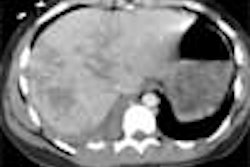CHICAGO - Samuel de Champlain, a 17th century explorer, apparently knew something about medicine -- or at least recognized scurvy when he saw it.
Researchers at the RSNA meeting on Monday said multidetector computed tomography (MDCT) could confirm that several early colonists on St. Croix Island suffered from scurvy and probably died from the disease during the terrible winter of 1604.
The 6.5-acre island situated in the middle of the St. Croix River on the border of U.S. and Canada was the home for 79 colonists in 1604, said Dr. John Benson, director of medical imaging at Mount Desert Island Hospital in Bar Harbor, ME.
Benson and colleagues examined the remains of seven of the 35 individuals who died during the harsh "Little Ice Age" that blanketed the island and much of the area with 3-4 ft of snow from October 1604 to April 1605.
"It's likely that the rest of the colonists would have died as well," Dr. Benson said in a press briefing, "if local First Nations tribes didn't supply the colony with food."
Champlain, who established the colony and believed the colonists would be fine because the latitude of St. Croix Island was similar to that of France, rescued the remaining 44 colonists in the spring of 1605, and they eventually became part of the first permanent French settlement at Quebec in 1608.
Dr. Benson said that Champlain kept detailed journals in which he suggested that the lost colonists succumbed due to scurvy.
Using MDCT on the bones, Dr. Benson was able to find tell-tale signs of scurvy in the long bones of the remains found during an excavation of the coloney site in 2003 by the U.S. National Park Service.
"Multidetector computed tomography images are extremely important to anthropologists because we can obtain bone measurements without destroying the artifact," said Dr. Benson in a press briefing. In fact, the bones were later reburied on the island.
"We were able to visualize the entire skull from every angle, inside and out. Scans of the skulls and the leg bones revealed a think hard palate in the mouth and an extra layer of bony tissue on the femur and tibia, which we believe resulted from the internal bleeding associated with scurvy," Dr. Benson said.
Because the remains were reinterred and are no longer available, a digital archive of the research project was created and will eventually reside permanently with the Smithsonian Institution for further research and study.
By Edward Susman
AuntMinnie.com contributing writer
November 29, 2004
Copyright © 2004 AuntMinnie.com



















